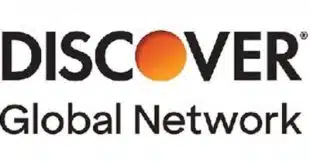Possibly as soon as later this year, the processing giant will undergo a mammoth IPO. Here, a payments-industry analyst sizes up what the company can offer investors.
The world’s largest payment processor, First Data Corp., is girding for an initial public offering, likely later this year. It promises to be the biggest payments IPO since Visa Inc.’s in 2008.
How big, and what kind of growth story can it sell investors? To answer those questions, let’s revisit some recent history and then take a look at First Data’s growth prospects.
In 2007, storied private-equity firm Kohlberg Kravis Roberts & Co. took First Data private in the largest payments leveraged buyout in history, pushing the envelope with a stratospheric 13 times debt-to-traditional-EBITDA (earnings before interest, taxes, depreciation and amortization) ratio. Its annual report’s “adjusted” EBITDA suggests the more meaningful ratio was 7.8—still aggressive.
But First Data’s annuity streams of payment-processing fees from thousands of financial institutions and millions of merchants, strong secular card-payment growth, and the prospect of rationalizing redundant delivery systems, made that ratio less reckless than it seemed at first blush.
The Great Recession, however, was a significant and immediate speed bump. Thankfully for KKR, low interest rates and accommodating lenders that were willing to roll over a $22.6 billion debt mountain gave First Data needed runway.
Stay the Course
It’s been a bumpy runway.
In the last seven years, First Data’s had five chief executives. Now, JPMorgan Chase alumnus Frank Bisignano holds the reins. In April, at the Electronic Transactions Association’s annual conference in San Francisco, he hailed the company as “the grand collaborator,” “a commerce enabler,” and having “waterfront property.”
Clichés to be sure. The company’s strategy seems to be to stay the course, leverage its massive distribution, and, given its debt burden, focus on the United States, where improvements generate the most cash.
Under Bisignano, First Data’s been hyped as becoming “a technology innovator for the 21st Century.” It’s still a Goliath industrial-strength processor that uses technology, not a technology company or innovator. Its assets are scale, product breadth, and multinational delivery and distribution, with more sales reps, independent sales organizations, and bank joint ventures and referral partnerships than any competitor.
It trimmed noncore assets, shutting down official checks and selling a minority stake in a fleet-card business to Warburg Pincus. Adding to the balance sheet, it took control or full ownership of merchant acquiring and processing partnerships from BofA Merchant Services, Merchant Solutions, and OmniPay. And, enriching the product suite, First Data picked up merchant point-of-sale-solution provider Clover in 2012, mobile-marketing-and-loyalty specialist Perka in 2013, and mobile gift-card platform Gyft in 2014.
After consolidating data centers, software applications, and operations in 2014, First Data generated $1.15 for every dollar of operating expense and a 22.7% EBITDA margin, improving from $1.10 and 20.8% in the first nine months of 2007.
Growth, however, has been lackluster. The processing giant’s products and principal market, the U.S., are mature. Consequently, one can’t expect growth like emerging-market mobile-payment phenom M-Pesa (up 21.6% in fiscal 2014), e-commerce specialist Adyen (up 100% in 2014) or digital-wallet, network, and e-commerce processor PayPal Inc. (up 19.3% in 2014).
Signal Opportunity
First Data’s largest business, U.S. merchant acquiring, has had to contend with gentle pricing erosion. But by signing small and medium-size businesses and selling additional services like the proprietary Clover platform, boosting fees and reducing attrition, it should be able to outpace the market, just.
Its number-two business, card-issuer processing, has to have breathed a sigh of relief that the trend of issuer Goliaths gaining share stalled. The largest issuers often think proprietary delivery systems are a competitive advantage, and from a cost standpoint they can justify processing in-house.
Small issuers outsource processing to First Data or competitors Total System Services Inc. (TSYS), Fidelity National Information Services Inc. (FIS), Fiserv Inc., and Visa.
The signal domestic opportunity would be persuading credit card giants processing internally, such as American Express, Chase, Citi, Discover, and U.S. Bank, to outsource. But that’s not something First Data can bank on.
In 2004, First Data purchased the Star debit network. As MasterCard’s and Visa’s post-IPO performances testify, networks with critical mass are terrific businesses. Star grew transactions 49% annually from 1995 through 2002, at which point it had 56% PIN-debit market share.
The U.S. Department of Justice considered Star so dominant it forced First Data to divest a stake in the NYCE debit network before blessing the Star acquisition.
There should have been powerful synergies in selling Star to First Data clients and delivering closed-loop benefits over an open network, such as card-linked promotional and loyalty programs. Disappointingly, however, since the acquisition, Star has lost most of its market share. By March 2015, at one national processor, its share was down to roughly 5%. While this company’s Star volume may not be representative of the entire country, Star’s current market share is probably 10% or less.
Land Grab
In the hunt for growth, a global payment-processing land grab is under way. First Data increased international processing and product revenue from 23.4% of the total in the first nine months of 2007 (its last months as a public company) to 25% in 2014. Rivals Global Payments Inc. and TSYS are less dependent on the U.S.
Boosting growth abroad is imperative. Appointing former U.S. senator and Knicks basketball legend Bill Bradley chairman of an international advisory board, however, isn’t going to do the trick.
First Data’s biggest foreign markets are the United Kingdom and Germany, where it laid foundations by acquiring bank-owned processors Signet back in 1991 in the U.K. and GZS in 2006 in Germany. First Data doesn’t process in Turkey, Europe’s second-largest credit card market after the U.K. It pulled out of a processing joint venture with pan-European ATM network Eufiserv.
Emerging markets offer headroom critical for the long term.
China is the world’s second-largest national card-payments market and enjoys explosive growth. POS terminals increased 49% and card payments 44% in 2013. First Data’s presence, however, is limited to card-management software licenses and providing cross-border card acceptance.
Brazil has more card payments than France and Germany and is growing faster. Domestic card payments increased 16% in 2013. Per-capita annual card payments were 50 compared with over 250 in the U.S., suggesting ample room for growth.
After a slow start in Latin America’s largest market, First Data appears to be making inroads. In 2013, it licensed card-management software to Orbital, a domestic card-issuer processor. While former monopolists Cielo and Redecard still dominate the highly profitable merchant-acquiring market, last year, with Brazil’s largest credit-union cooperative, First Data launched an acquiring business.
India may be the real sleeping giant. It’s more open than China, ultimately potentially larger, and growing fast. In 2014, Indian card payments increased 25% year-over-year, but per-capita annual card payments were a paltry one. First Data strengthened its beachhead by scooping up ICICI’s merchant processor in 2009.
Fertile Ground
So there’s fertile ground for growth. Could regulation, a disruptive technology, or monetary policy derail First Data?
Notwithstanding “Operation Choke Point,” in which regulators are punishing payment processors serving businesses of which the Obama administration doesn’t approve, merchant acquiring remains relatively lightly regulated.
Neither Bitcoin, nor mobile-operator-centric payment systems, nor digital wallets is going to displace retail-payment cards.
But one-year LIBOR at 6% instead of 0.69% would render the processor’s debt crushing and reduce equity valuations.
What’s First Data worth?
Payment processors Global Payments, TSYS, and Vantiv Inc. are reasonable valuation comparables. Their average EBITDA-valuation multiple is 14.4, suggesting First Data’s enterprise value ought to be $36 billionish, more than its whopping $20.7 billion debt. However, with a credible growth story, it would be valued higher.
With a lighter debt load, armed with a public currency, First Data should target surpassing global card-transaction growth, increasing the top line 10% to 12% annually.
—Eric Grover follows the global payments industry as principal of Intrepid Ventures, Minden, Nev.




